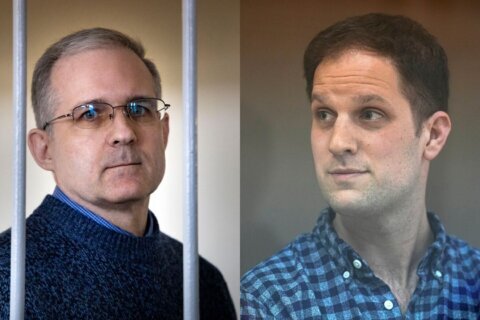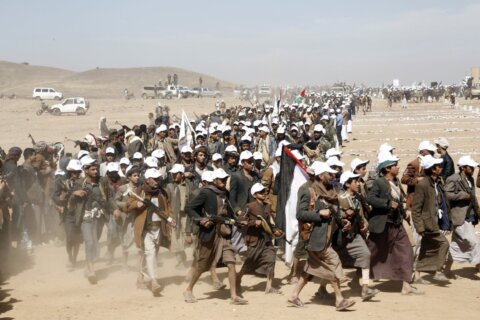Months before the Jan. 6, 2021, riot at the Capitol, a string of social media posts, rallies and law enforcement observations signaled trouble was coming to Washington, D.C.
But according to a former top U.S. official, disarray in the Intelligence Community led to a catastrophic intelligence system failure that left key national security organizations in the dark.
“By time we got to Jan. 6, a number of things had already broken down,” said Brian Murphy, who was Acting Under Secretary for Intelligence Analysis at DHS at the time.
“The first,” he said, “was a structural breakdown in the domestic intelligence architecture that was set up after 9/11. It was no longer functioning the way it should.”
Because of that intelligence sharing collapse, Murphy said the Capitol Police and the National Guard, which were dependent upon the FBI and DHS for intelligence, didn’t have enough information or resources to see what was coming.
The failure created an intelligence vacuum that allowed something no one expected — a violent, hourslong riot that resulted in five deaths and hundreds of injuries — to materialize.
Ahead of Jan. 6, thousands of Americans, communicating online about their discontent with the state of U.S. politics, were secretly joined and incited by foreign entities. Most of the outsiders had ties to Russia that would likely have been detected had the intelligence community apparatus been working properly.
The principal reason for the malfunction, according to Murphy, now vice president of Strategic Operations at IT firm Logically, was an internal management collapse, triggered by some of his superiors and colleagues appointed to their positions by the Trump administration.
He said they actively sought to downplay any intelligence regarding malign Russian activity in the months leading up to the election, even though there was plenty of it.
“The illiberal leaders that were in place throughout government that President Donald Trump had put in there, also populated the Department of Homeland Security and,” Murphy said, “I heard from others that they were in the FBI and other places as well.”
The bottleneck couldn’t have come at a more critical time.
On Nov. 6, exactly two months before the riot, there were clear signs that protesters, upset about the looming election loss for President Donald Trump, were mobilizing and planning to come to Washington.
They shared their plans openly online.
“If we get enough Patriots, I’m thinking we meet up at Turtle Park 4500 Van Ness St. NW Washington D.C. 20016,” said a post, written by one of the users of a chat room that WTOP gained access to.
As this and other users on the thread made their intentions clear and public, according to several U.S. intelligence sources, including Murphy, foreign instigators who were posing as protesters began to infiltrate their chat groups.
“I think, without question, the hand of a number of foreign actors were at play there,” said Murphy.
The potential evidence was in the chat room users’ own words.
Suggesting that protesters gather at a little-known local venue, that would be unlikely to attract police attention, seemed to be the organizer’s objective.
But Turtle Park is only blocks away from one of the most intensely watched national security targets in Washington — Fort Reno.
The site is the highest elevation in the District of Columbia. It is also home to, perhaps more importantly, a key city drinking water treatment conduit. Because of Soviet surveillance in the 1960s, and alleged plans to poison the water supply from there, the location is closely and constantly watched.
Another telltale sign that the organizer might not be familiar with Washington, or even live in the U.S., was the choice of Turtle Park as a starting point for a protest march in Washington.
It is seven miles from the Capitol.
A responding user, who seemingly recognized the intense security in Washington at the time, squashed the suggestion.
“D.C. could be a war zone by this weekend for all we know. As well as other regions come the weekend. ‘Peaceful Protests’ tend to have bigger numbers on Saturdays. I would discourage anyone who wants to go to D.C. In my opinion, at this point, we all need to be prepared to defend our own regions in the weeks ahead,” the responder said.
The response, while more rational, seemed to want to avoid contact with “Peaceful Protests,” leaving open what the actual intent of what this chat group was.
An analysis by intelligence officials, had the system been working properly, might have been able to make a determination.
These were just two of thousands of people online discussing plans to come to Washington as momentum and support grew for a movement that culminated in the worst attack on the U.S. since 9/11.
And just as was the case in 2001, the U.S. Capitol was a key target.
The difference, 20 years later, was that the very organization set up to prevent it from happening again had failed to do its job.
NEXT: Lessons learned from the Capitol Riot
- Where we are with cases against the accused Capitol rioters
- ‘Not taking any chances’: US Capitol Police chief talks security ahead of Jan. 6 anniversary
- PHOTOS: WTOP reporter’s retrospective of the Capitol riots, one year later
- GW professor: Persistent misinformation leading to Capitol riot threatens democracy
- VIDEO: Covering the insurrection
- Can images from Jan. 6 insurrection traumatize your child?
- More coverage of the Capitol Riot








